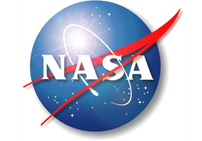NASA Center Innovation Fund (CIF): Agency Concepts for Collaboration

The purpose of this NASA CIF: Agency Concepts for Collaboration tool is to facilitate inter-Center collaborations that will stimulate and encourage creativity and innovation across the NASA Centers in addressing the technology needs of NASA and the nation. This tool allows for the early assessment of similarities among anticipated CIF concepts, prior to individual Center CIF solicitation release and award selections, and provides a path to leverage the talent and capabilities at various Centers. Use this site to:
1) Share your anticipated CIF concept to inform other researchers from across the Agency with similar areas of interest that may want to establish a mutually beneficial partnership; or,
2) Search other potential CIF concepts across the Agency that may benefit from your particular technical expertise, and that you may wish to establish a partnership.
All information on this site is open to personnel at the NASA Centers and JPL only, and no ITAR restricted information should be uploaded to this site. ITAR content consists of that described below in the ITAR Defense Article.
TAR Defense Article
Defense article means any item or technical data designated in S 121.1 of this subchapter. The policy described in S 120.3 is applicable to designations of additional items. This term includes technical data recorded or stored in any physical form, models, mockups or other items that reveal technical data directly relating to items designated in S 121.1 of this subchapter. It does not include basic marketing information on function or purpose
Technical data related to defense articles: (1) Information, other than software as defined in S 120.10(a)(4), which is required for the design, development, production, manufacture, assembly, operation, repair, testing, maintenance or modification of defense articles. This includes information in the form of blueprints, drawings, photographs, plans, instructions or documentation. (2) Classified information relating to defense articles and defense services; (3) Information covered by an invention secrecy order; (4) Software as defined in S 121.8(f) of this subchapter directly related to defense articles; (5) This definition does not include information concerning general scientific, mathematical or engineering principles commonly taught in schools, colleges and universities or information in the public domain as defined in S 120.11. It also does not include basic marketing information on function or purpose or general system descriptions of defense articles.








